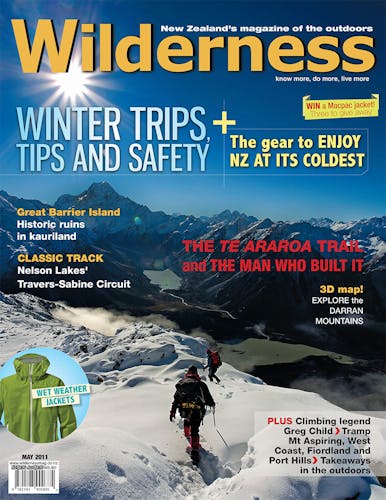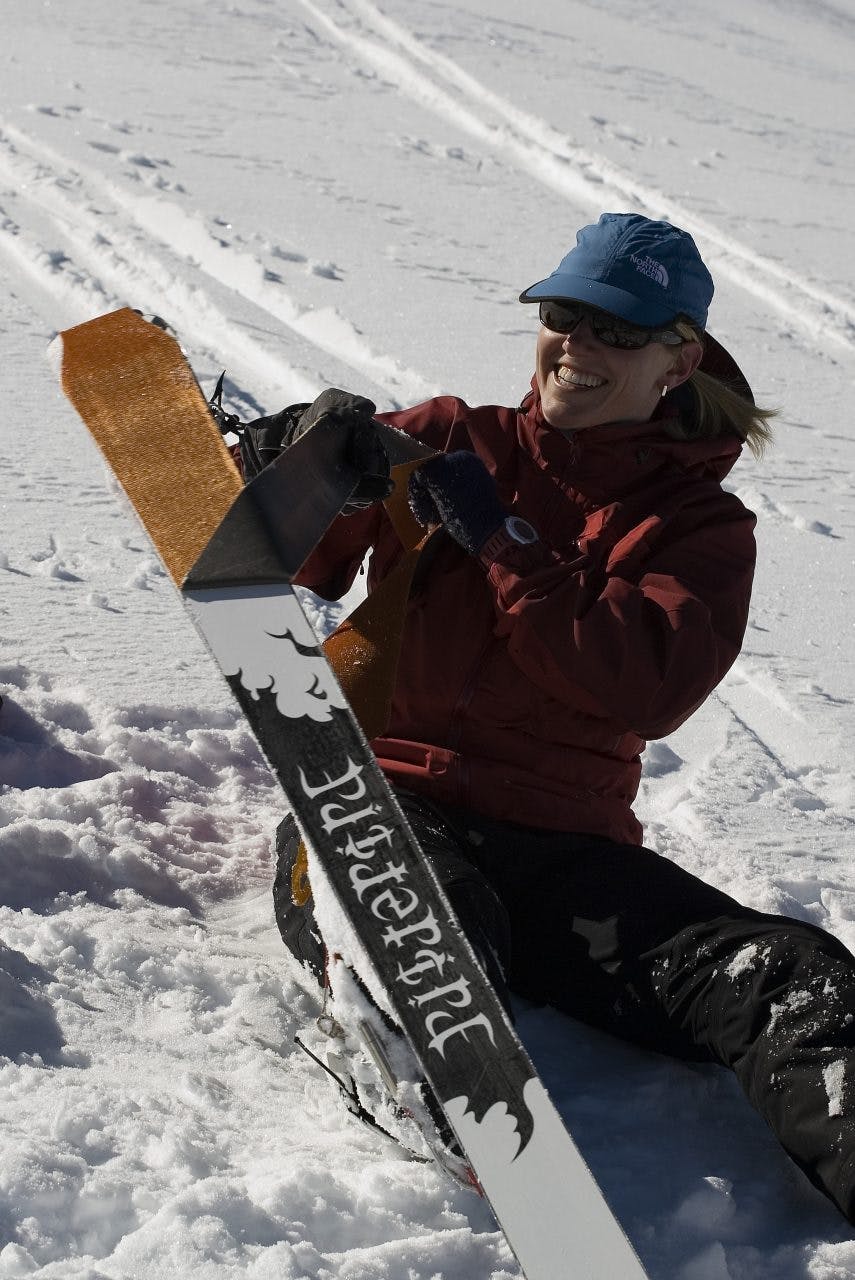Whether you’re heading out tramping, resort skiing, or flying deep into the Southern Alps, it’s often the little things you know that make a big difference. Wilderness asked some of New Zealand’s best mountain professionals to share their favourite winter tips.
Tramping, camping and mountaineering
Skip the luna-tic weather predictions
“Ignore Ken Ring’s predictions and beliefs – they aren’t backed by proven science,” says mountain guide and Cardrona ski patroller Geoff Wayatt. Why? “In brief – water is 700 times more dense than air; therefore the Moon’s effect will be 700 times less on our air mass and weather patterns. Instead, go to the New Zealand Met Service Rural Outlook for a brief seven day forecast for cloud, precipitation, temperatures and wind – all on one page.”
Nalgene bottle boot dryers
“Swap out your 1-litre Nalgene for two 500ml Nalgene drink bottles,” advises Steve Moffat from Adventure Consultants (adventureconsultants.com). “Two great reasons: One, these fit easily into jacket pockets to stop them freezing during the day. Secondly, in the evening fill each with boiled water and slip them into the liners of your climbing or ski touring boots and they will dry out overnight. Reheat in the morning for super warm liners to put on. Your 1 litre bottle can still be used; it’s a great storage device for single malt whiskey.”
Don’t sweat – but drink lots
“It’s easy to forego drinking adequate fluids just because it’s too cold to drink,” says another Adventure Consultants’ guide, Mark Morrison. “Take a Thermos flask – you will perform so much better. And even though it’s freezing, once you start working hard you will sweat like any other day. Try to maximise the efficiency of your layering to prevent sweating.”
The faster lighter
“Keep your stove lighter in your breast pocket – especially when snow camping,” suggests Dave Macleod from Independent Mountain Guides (independentmountainguides.co.nz). “Your body heat keeps the gas in the lighter nice and warm and when you want to light your stove there is no bothersome constant flicking of the lighter required.”
Skiing and ski touring
The amazing standing skin peel
“There is no need to take your skis off to take off your skins,” reckons Whit Thurlow from Aspiring Guides (aspiringguides.com). “Learn to stand on one leg and lift the other leg back so the tip of one ski is on the ground and the tail is by your shoulder. You can now reach back and unhook the skin on that ski tail. Hang onto the skin and pull it to the side (and off the ski) as you lean forward and bring your leg back down. Hold the tip of the ski in the air and finish pulling off the skin. With a little practise it becomes easy and you will be getting first tracks every run while everyone else is putting their skis back on!”
A waxy solution to a sticky problem
“When the snow gets heavy on your skins wipe your skin down with a simple candle stub,” says Dave Macleod. “The wax from the candle is absorbed onto the surface of the skin and, hey presto, no more heavy snow sticking like glue [This also works great for the bottom of your ski boots].”
Foggy goggle fix
Whit Thurlow knows how to solve one of the problems of our age: “Don’t wear your goggles on your head when you are skinning or snowshoeing up hill since they will fog up when you get warm. Instead, put them in your pack or pocket and only wear them when you are going downhill and the wind keeps them from fogging.”
Don’t leave home without the duct tape
“Take some good quality duct tape and roll it around your ski pole about 10cm below the grips,” says Thurlow. “Make a big enough bump to give you an extra lower grip that you can hold. When you are traversing up hill, use the lower grip on the uphill hand to help stay in balance. As a bonus, you have a quick supply of duct tape for emergency repairs.”
Avalanches and safety
The ‘bring a chick’ trick
“Current stats indicate that a group with a female in the party is less likely to ignore obvious avalanche danger signs and avalanche advisories,” says Geoff Wayatt. “Take note: 20-30-year-old single males are the statistically high-risk group.”
Buy a pack with the snow shovel holder on the outside
“You will use your shovel more that way digging test profiles, other snow stability tests, for rescue purposes or simply for the multitude of uses a snow shovel is handy for,” explains Dave Macleod.
“Ensure the shovel has a robust fastening system to your pack – you don’t want to lose your shovel and handle if you have an avalanche involvement.”
Avalanche transceivers and cell phones
“Cell phone electronics can interfere with transceiver searches, so turn them off,” states Wayatt. “[But do bring ‘em with you, just in case – many backcountry ski areas have reception!]”
If all else fails…
Says Wayatt: “Carry dog biscuits in your pocket and you might be a higher priority find for an alpine search dog.”







